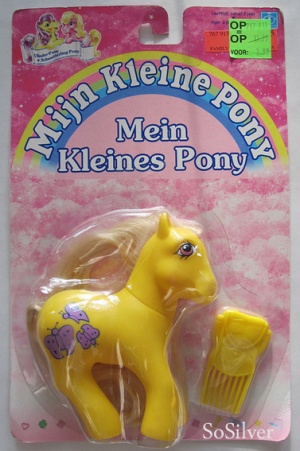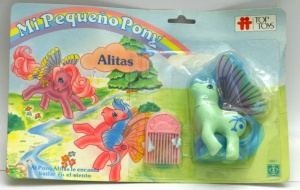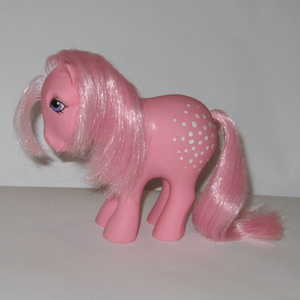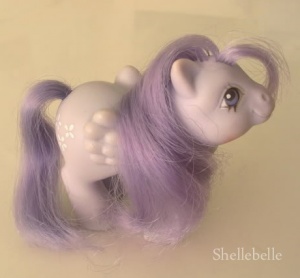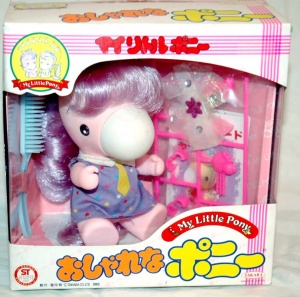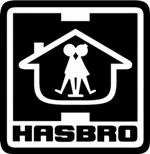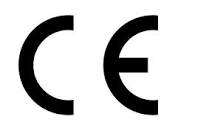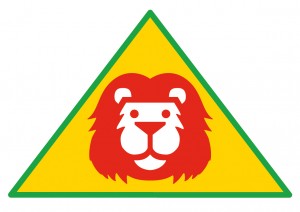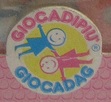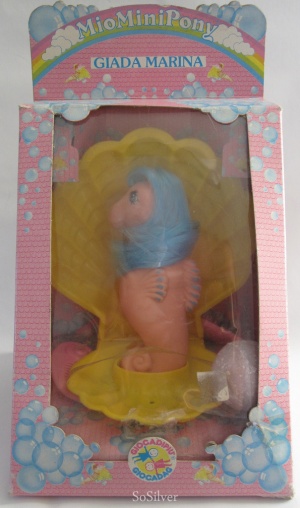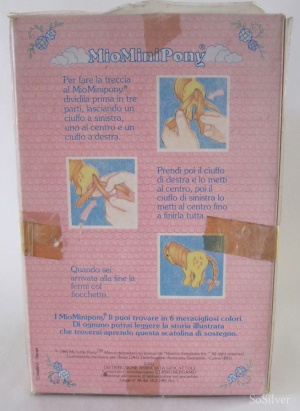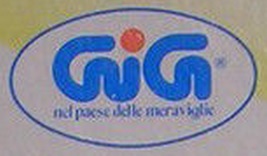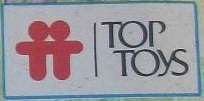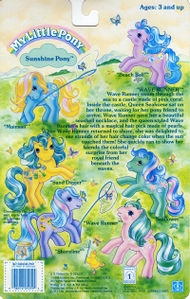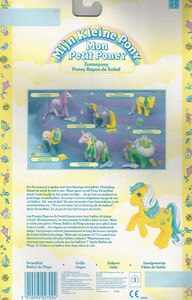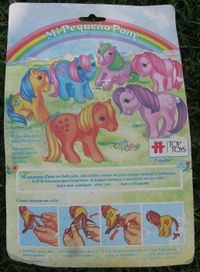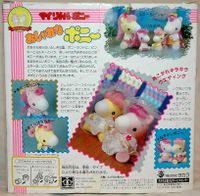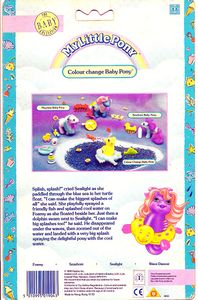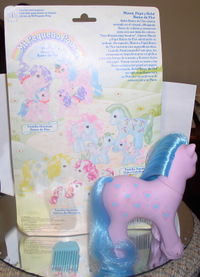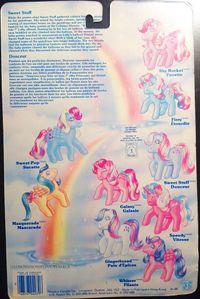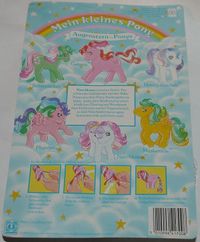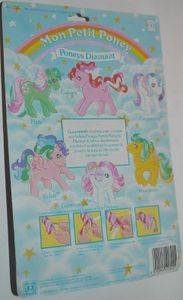G1 Pony Distribution
| My Little Pony Translated |
|
Before you can understand the organization of G1 Pony Distribution, you have to first understand the truth, there was no organization of G1 Pony Distribution, and whatever patterns you can find in it are tiny miracles and you should treasure them. Seriously though, its complicated.
- Brief Background on G1 Collecting
- Most of the people that collector G1 ponies today, have been collecting since basically from when My Little Ponies from came out at the very start of the 1980s. If any of you remember the internet of the 1990s, is was a different universe than the one we have now. There was no Google to find things for you, there were webrings (seriously look that up if you don't know what that is). eBay has blown away G1 collectors time and again when people list ponies for sale from not the US and not the UK that G1 collectors could never have imagined.
- Terminology
- This wiki is going to use the established terminology that can be accurately defined, but it going to add a few new terms for accuracy and globalization's sake. These terms are below ordered from "most common/least expensise" to "least common/most expensive". One of the hardest facts in collecting are the ponies of which just a few are even known to exist, and the insane prices some collectors are willing to pay for them.
Contents
Common Ponies
Common Ponies is a term that this website is going to try to use in place of terms like "US", "regular", "non-international". The basis of this type of pony is the ponies packaged for sale in the US and Canada. Though even some in
A 'common pony refers to the most common version of a G1 pony that was released. It would be minimally available in the US, Canada and Europe. However these ponies made it into Mexico, South America... So that literally, these are the versions that are the most common on a global scale.
- ponies packaged for the US were sold in stores in the Netherlands.
- Price Range -least expensive
- To give you an idea, a common Common pony without any serious hair cuts or marks can cost $5. Up to a few hundred for the rarest mail order ponies, or MIP ponies.
The ponies that were oddly fragile in similar decent condition can go for much more:
- ponies with glittery symbols which rubbed off
- So Soft ponies who most frequently had flocking rubbed from their hooves and ears
- Wingers and Flutters (especially flutters)
- ponies only available through mail order
- etc
- Price Range: $5-$200
- Number of toys: 500-600
European Ponies
| Countries where European ponies are known to have been sold |
|
European Ponies (on this site) refers to G1 ponies that were not available in the Americas, but were widely available in many European countries, including the UK.
The G1 Exclusive Ponies page includes both these ponies, and ponies that were available in just one or two European countries, but generally not in North America at all.
These list includes the countries that got any of the generally European Ponies. Keep in mind several of this countries did have more exclusive ponies such as ponies only they sold, or only they made, and those countries are listed again farther down in order of scarcity.
- Price Range -slightly more expensive than Common ponies
- To give you an idea, a common Common pony without any serious hair cuts or marks can cost $10. The cost of MIP ponies may depend heaily on the language of the packaging. "Exotic" packaging may be enticing, or it may not be the box one opened as a child, thus less desirable.
- European countries thought to have gotten no ponies
- Romania
Nirvana Ponies
Nirvana is a term coined by G1 collectors to denote the toys that were particularly rare, due to the fact that they were neither available all over the US/Cananda nor all over Europe. Ponies that are considered to fall under this category include ponies that were made in a country other than China and Hong Kong. Also ponies which were sold in just one country, or perhaps a few geographically (and perhaps linguistically) nearby countries.
Dutch
Dutch is probably a misnomer, but that is what they are called by collectors. All the ponies seemed to have had bilingual Dutch and German packaging. Thus their distribution was likely not only the Netherlands, but also Germany and Austria.
- Price Range: $
- Number of toys: 13
Italy
France
French ponies are considered "French" because they were made in France. Their hooves are marked "MADE IN FRANCE".
- Price Range: $
- Number of toys:
Argentina
Colombia
Brazil
- Price Range: $
- Number of toys: ~46
India
Funskool made and sold the first six ponies in India. They have clearly marked hooves that say FUNSKOOL.
- Blossom
- Blue Belle
- Butterscotch (two variants)
- Cotton Candy
- Minty
- Snuzzle
- Price Range: $50-$200
- Number of toys: 7
Venezuela
- Price Range: $
- Number of toys: ~35???
Mexico
There are only six toys marked "Lily Ledy" and "Made in Mexico".
- Price Range: $
- Number of toys: ~70
Greece
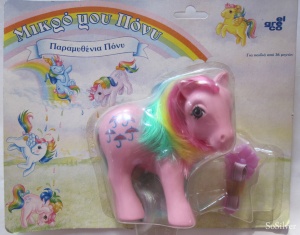
There are about 35 ponies made and sold exclusively in Greece, by a Greek pony company El Greco. These ponies were only go to about Year Three. Presumably, after Hasbro bought El Greco, the ponies produced in China and Hong Kong were sold there. I base that on this ad from Year Ten, Greek Language Rollerskates Pony TV Commercial (youtube).
- Price Range: $30-$1500
- Number of toys: ~35
Japan
The Japanese toy company Takara-Tomy got the license to do whatever with My Little Pony, and they did this. Japan only got this type of G1 My Little Pony. They are probably the rarest of the country specific G1 sets. Only a handful are known to exist to collectors.
- Price Range: $700-$3000?
- Number of toys: 6 (minimum confirmed to exist)
Packaging
Marks
- Hasbro logo
- This was Hasbro's logo from 1977-1994.[1]
- CE symbol
- "The CE marking indicates a product’s compliance with EU legislation and so enables the free movement of products within the European market."[2]
- Lion Mark
- "The Lion Mark was developed in 1988 by the BTHA to perform a function not covered by the CE Mark, namely, to act as a recognisable consumer symbol denoting safety and quality."[3]
- DAG
- DAG (Distribuzione Associata Giocattoli), Italian toy company that produced and distributed toys around 1984. They are responsible for the exceptionally boxy initial packaging.
- GiG logo
- GiG is a Italian toy company that initially made G1 ponies in Italy.
- Top Toys logo
- The company that made and distributed My Little Ponies in Argentina.
Types of Packaging
- Italian
- Spanish:
